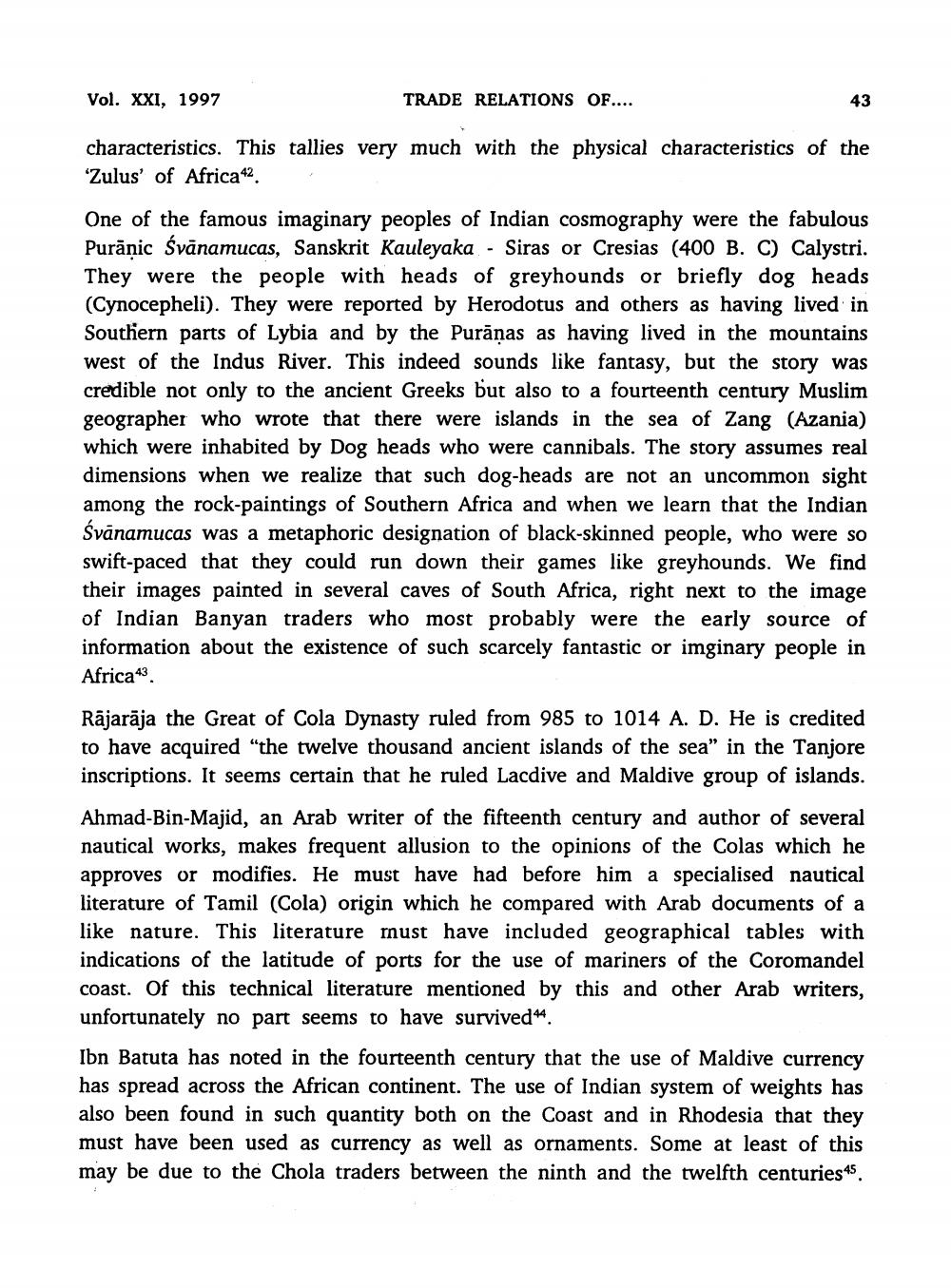________________
Vol. XXI, 1997
TRADE RELATIONS OF....
characteristics. This tallies very much with the physical characteristics of the 'Zulus' of Africa42
One of the famous imaginary peoples of Indian cosmography were the fabulous Purāņic Svānamucas, Sanskrit Kauleyaka - Siras or Cresias (400 B. C) Calystri. They were the people with heads of greyhounds or briefly dog heads (Cynocepheli). They were reported by Herodotus and others as having lived in Southern parts of Lybia and by the Purāṇas as having lived in the mountains west of the Indus River. This indeed sounds like fantasy, but the story was credible not only to the ancient Greeks but also to a fourteenth century Muslim geographer who wrote that there were islands in the sea of Zang (Azania) which were inhabited by Dog heads who were cannibals. The story assumes real dimensions when we realize that such dog-heads are not an uncommon sight among the rock-paintings of Southern Africa and when we learn that the Indian Svānamucas was a metaphoric designation of black-skinned people, who were so swift-paced that they could run down their games like greyhounds. We find their images painted in several caves of South Africa, right next to the image of Indian Banyan traders who most probably were the early source of information about the existence of such scarcely fantastic or imginary people in Africa43
Rājarāja the Great of Cola Dynasty ruled from 985 to 1014 A. D. He is credited to have acquired "the twelve thousand ancient islands of the sea" in the Tanjore inscriptions. It seems certain that he ruled Lacdive and Maldive group of islands.
Ahmad-Bin-Majid, an Arab writer of the fifteenth century and author of several nautical works, makes frequent allusion to the opinions of the Colas which he approves or modifies. He must have had before him a specialised nautical literature of Tamil (Cola) origin which he compared with Arab documents of a like nature. This literature must have included geographical tables with indications of the latitude of ports for the use of mariners of the Coromandel coast. Of this technical literature mentioned by this and other Arab writers, unfortunately no part seems to have survived. Ibn Batuta has noted in the fourteenth century that the use of Maldive currency has spread across the African continent. The use of Indian system of weights has also been found in such quantity both on the Coast and in Rhodesia that they must have been used as currency as well as ornaments. Some at least of this may be due to the Chola traders between the ninth and the twelfth centuries 45.




